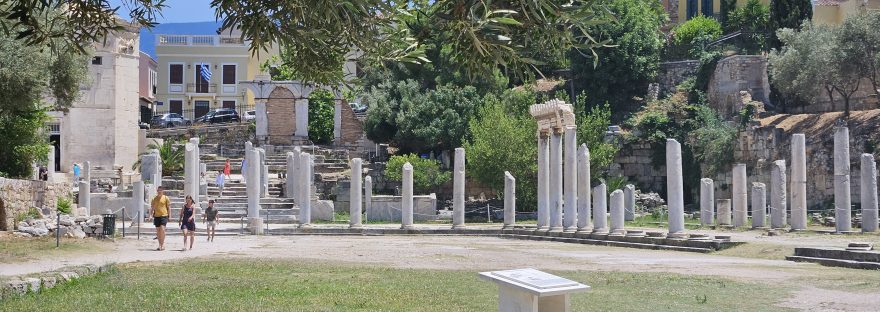Located between the Acropolis of Athens and Monastiraki Square is the impressive Roman Agora. This enclosure, a legacy of the Roman presence in Greece, was built between 19 B.C. and 11 B.C., under the rule of Emperor Augustus, and later expanded by the philhellenic emperor Hadrian, a great defender of this culture and its traditions. In 267, after the invasion of the Heruli (Germanic people who inhabited Northern Europe and participated in the invasion of the Roman Empire), the city of Athens was limited to the interior of the late Roman wall. The administrative and commercial center of the city was moved from the ancient Agora to the Roman Agora and Hadrian’s Library.
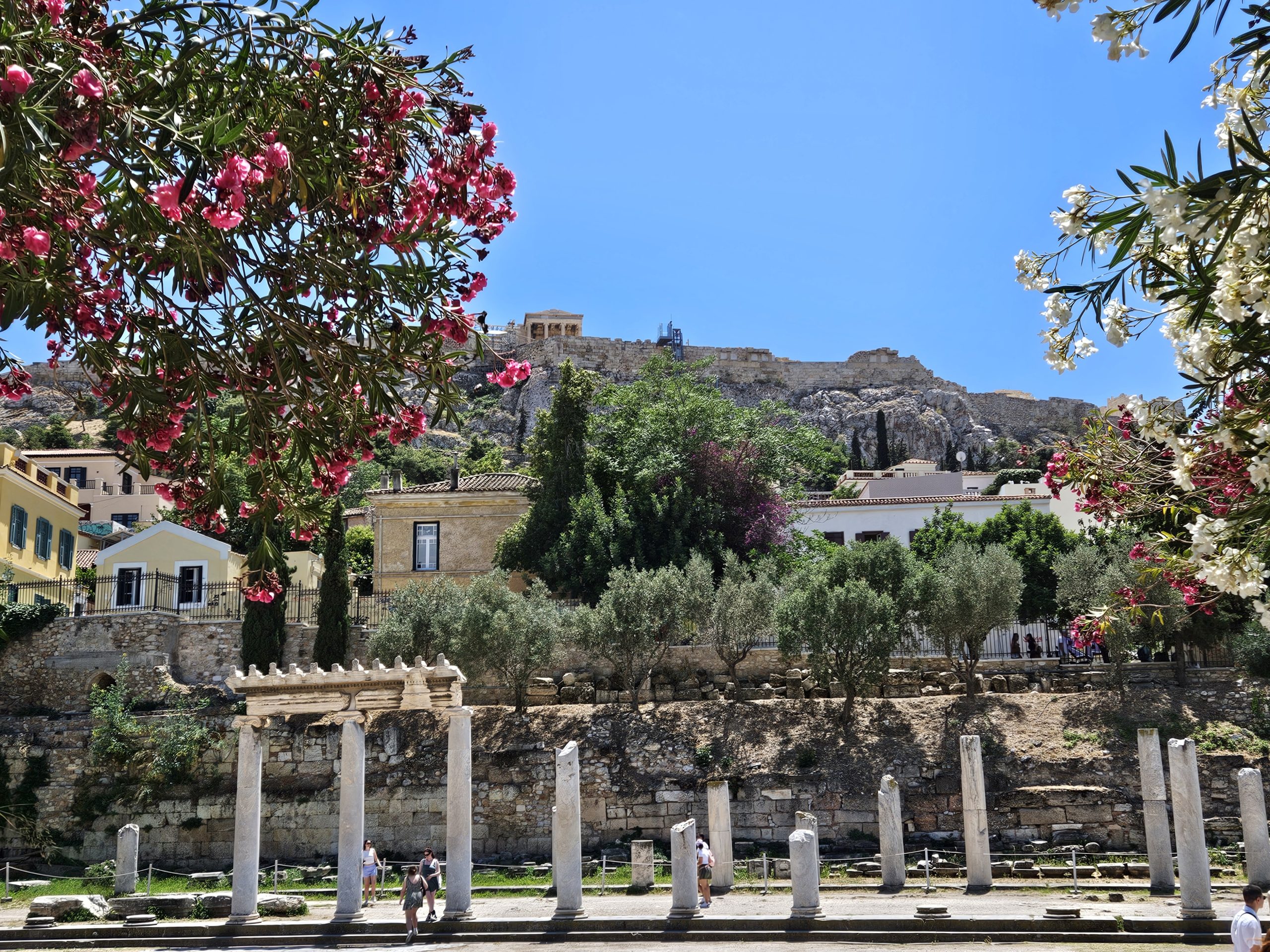
During its golden age, the Roman Agora covered a rectangular space of 100 square meters surrounded by stoas, which refers to covered walkways intended for trade. The stoas were architectural structures of classical style and very elongated rectangular plan, which were used as markets, meeting places and spaces for social exchange, and even public latrines were located in that area.
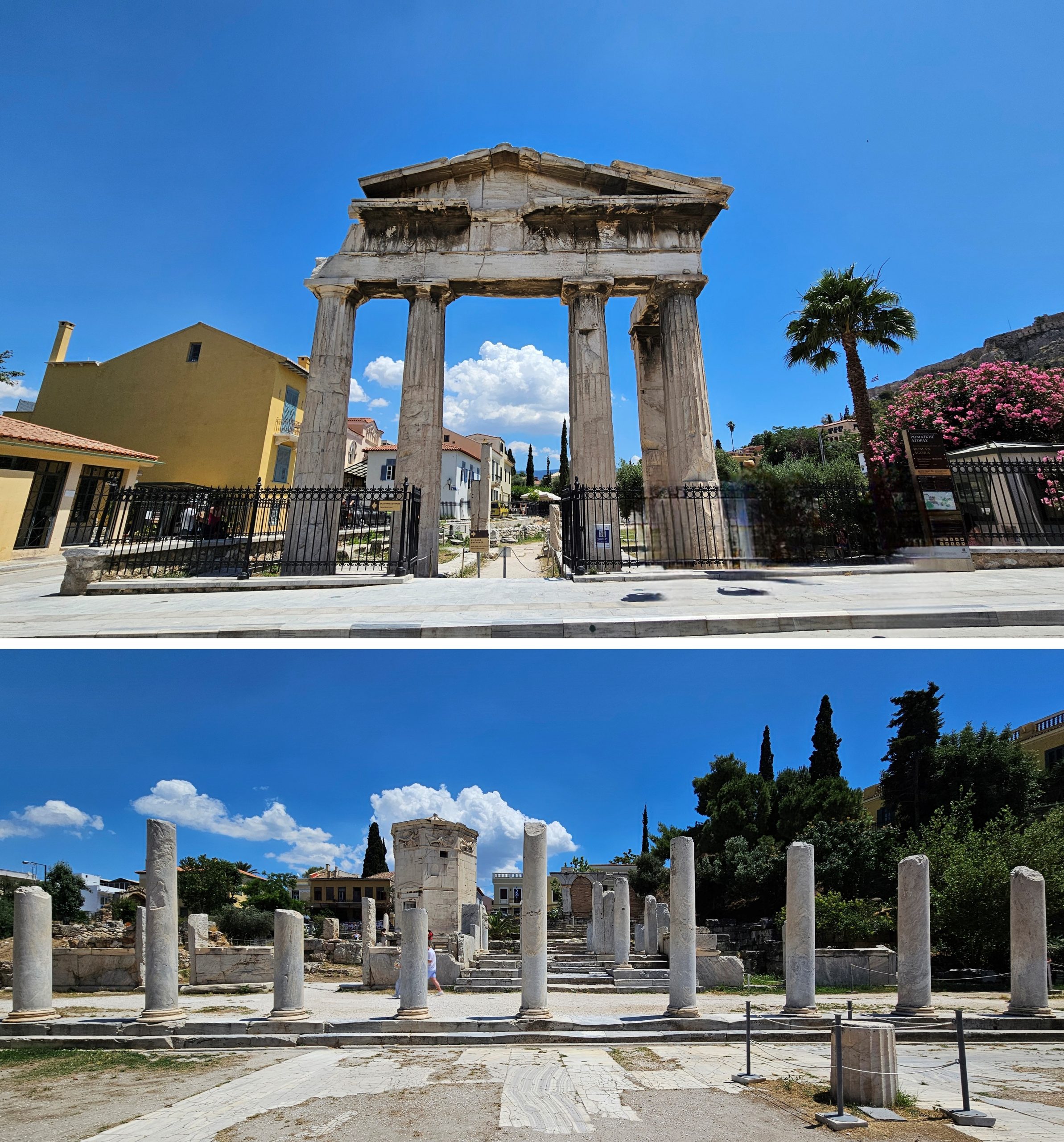
Access to the Roman Agora was through two entrances: the gate of Athena Arquegetis on the west and a propylon on the eastern side. The agora was surrounded by a marble colonnade in Ionic style and the courtyard was completely covered with marble. The building’s propylon (entrance gates) led to the eastern and western sectors of the city.
Gate of Athena Arquegetis
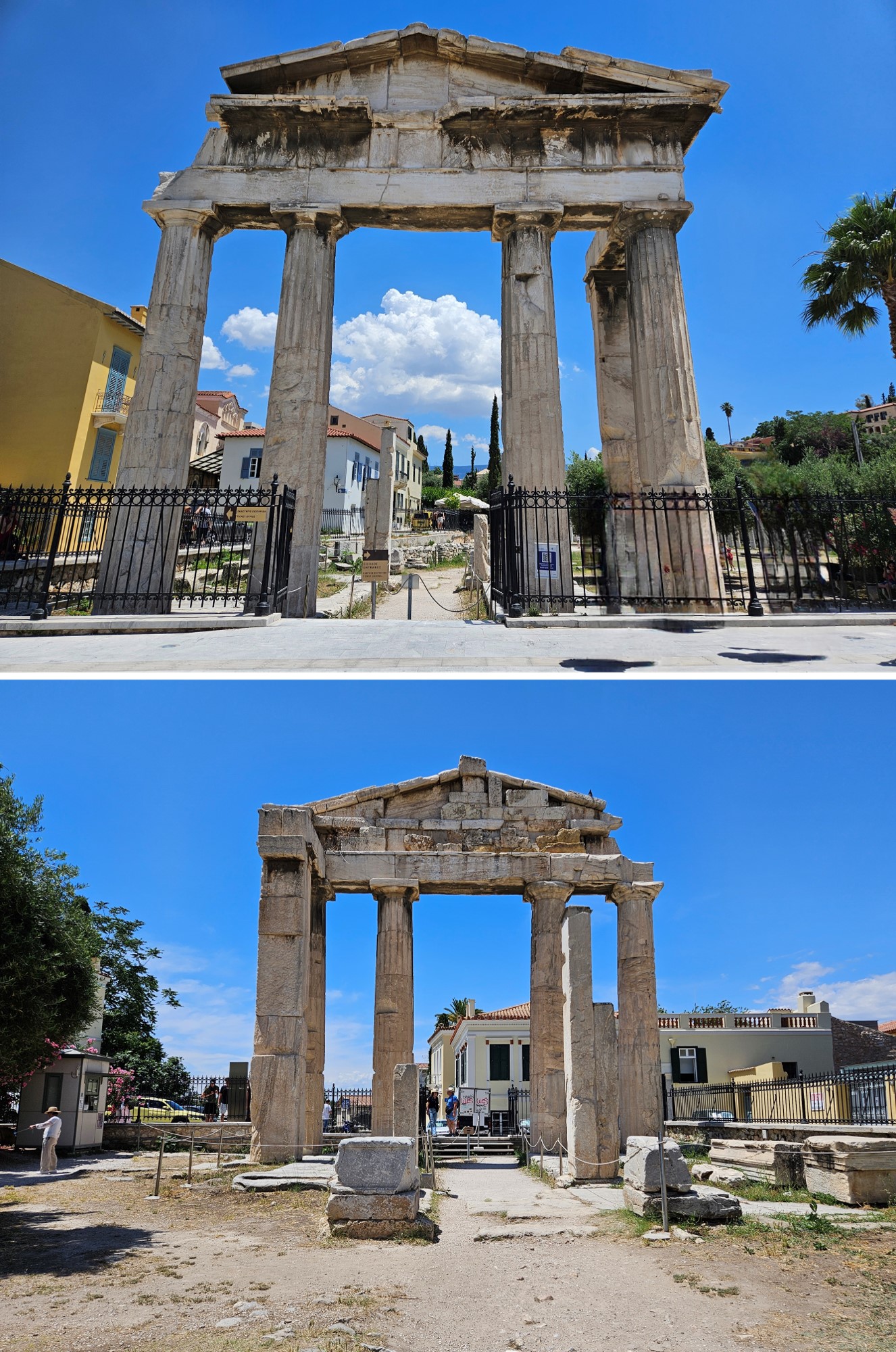
The Gate of Athena Arquegetis is the western entrance to the Roman Agora of Athens. It was built in 11 BC by donations from Julius Caesar and Augustus. It is a monument dedicated by the Athenians to their patron saint, the goddess Athena Arquegetis. The monumental gate has four Doric columns on a Pentelic marble plinth, which support a wide pediment. It is considered the second most prominent remains, after the Tower of the Winds.
Mosque of Fethiye
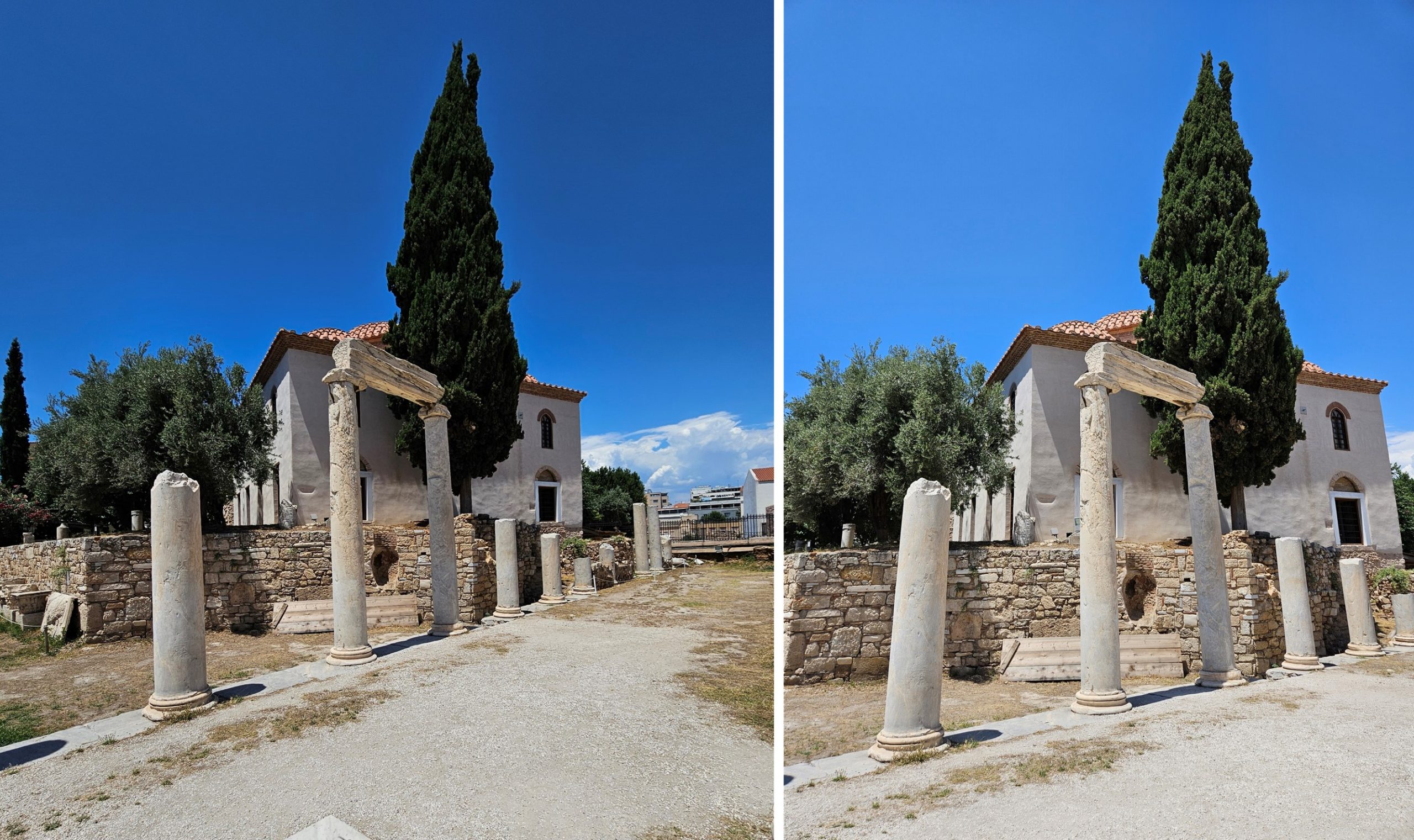
The Fethiye Mosque is a magnificent Ottoman building located on the north side of the ancient Roman Agora of Athens. This monument was erected between 1668 and 1670 on the site of a former Byzantine basilica from the 8th to 9th century, which was converted into a mosque after the conquest of the city by the Ottomans in 1456. Subsequently, after Greek independence, the temple was discarded for worship and was put to various uses before being restored in the 2010s. Today, it functions as an exhibition space.
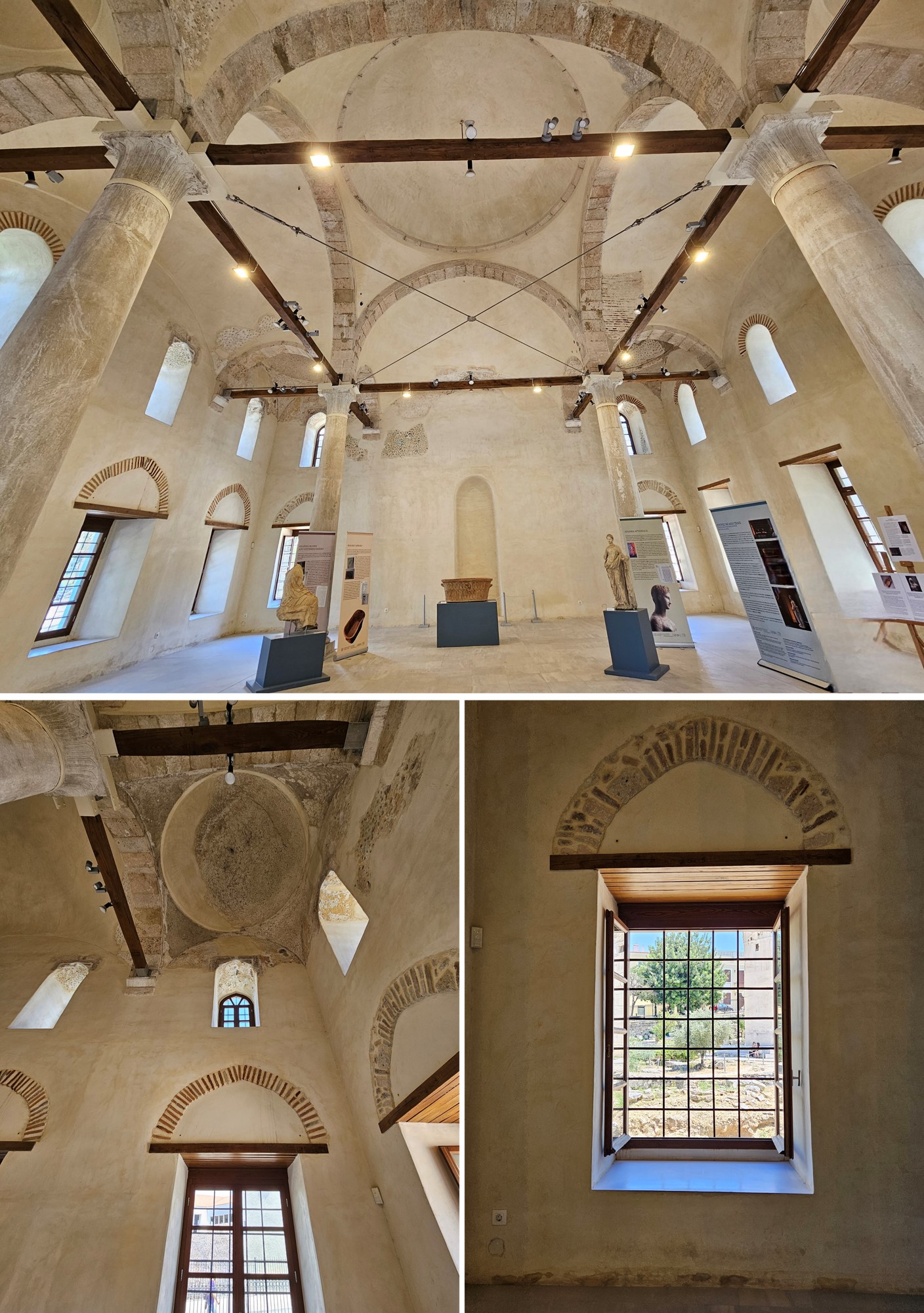
The mosque has a tetraconch plan, a Greek word meaning “four shells”, which is characterized by four apses, one in each direction and has a higher dome over the central space. The square room of the Fethiye Mosque for prayer is surrounded by four columns that support the dome. The mihrab, which points to the alqibla (pointing the direction to the Great Mosque of Mecca), has simple lines and lacks ornamentation, while the interior is plastered and has no polychrome decoration, except for some floral motifs in shades of red and blue on the mihrab and on the eastern window of the north wall.
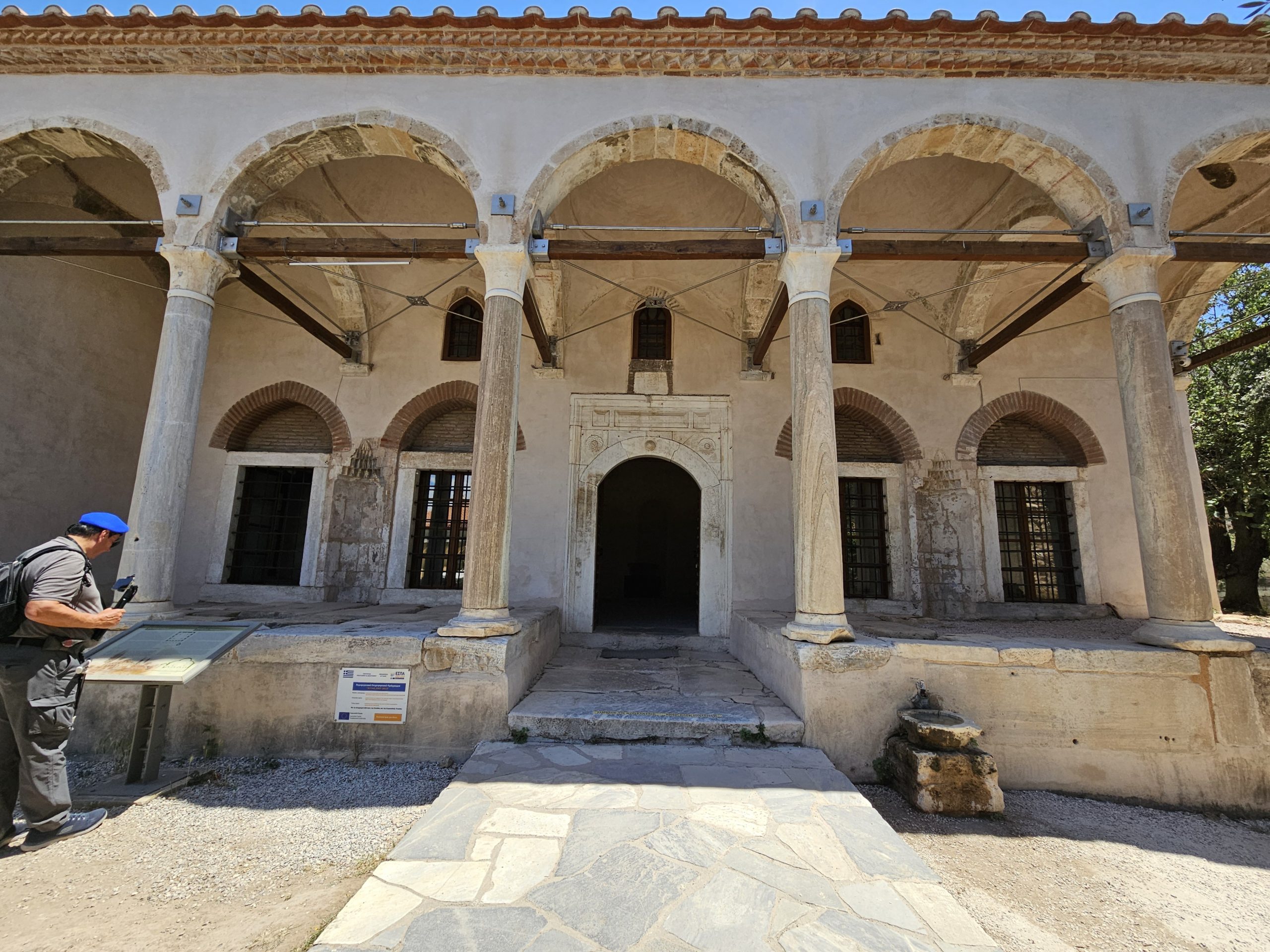
On its exterior, a portico with four reused columns, crowned by five small domes and paved with marble, serves as the entrance from the west side. Remains of color can be seen on the arches. On both sides of the entrance, a niche with muqarnas separates the two windows of the portico, while the marble frames of the entrance and the windows have inscriptions, the oldest of which are dated between 1669 and 1670. The roof is covered with tiles, and the minaret or tower, which probably dates back to the first mosque, given its different orientation with respect to the rest of the monument, is only preserved at the base of the spiral staircase.
Eastern propylon
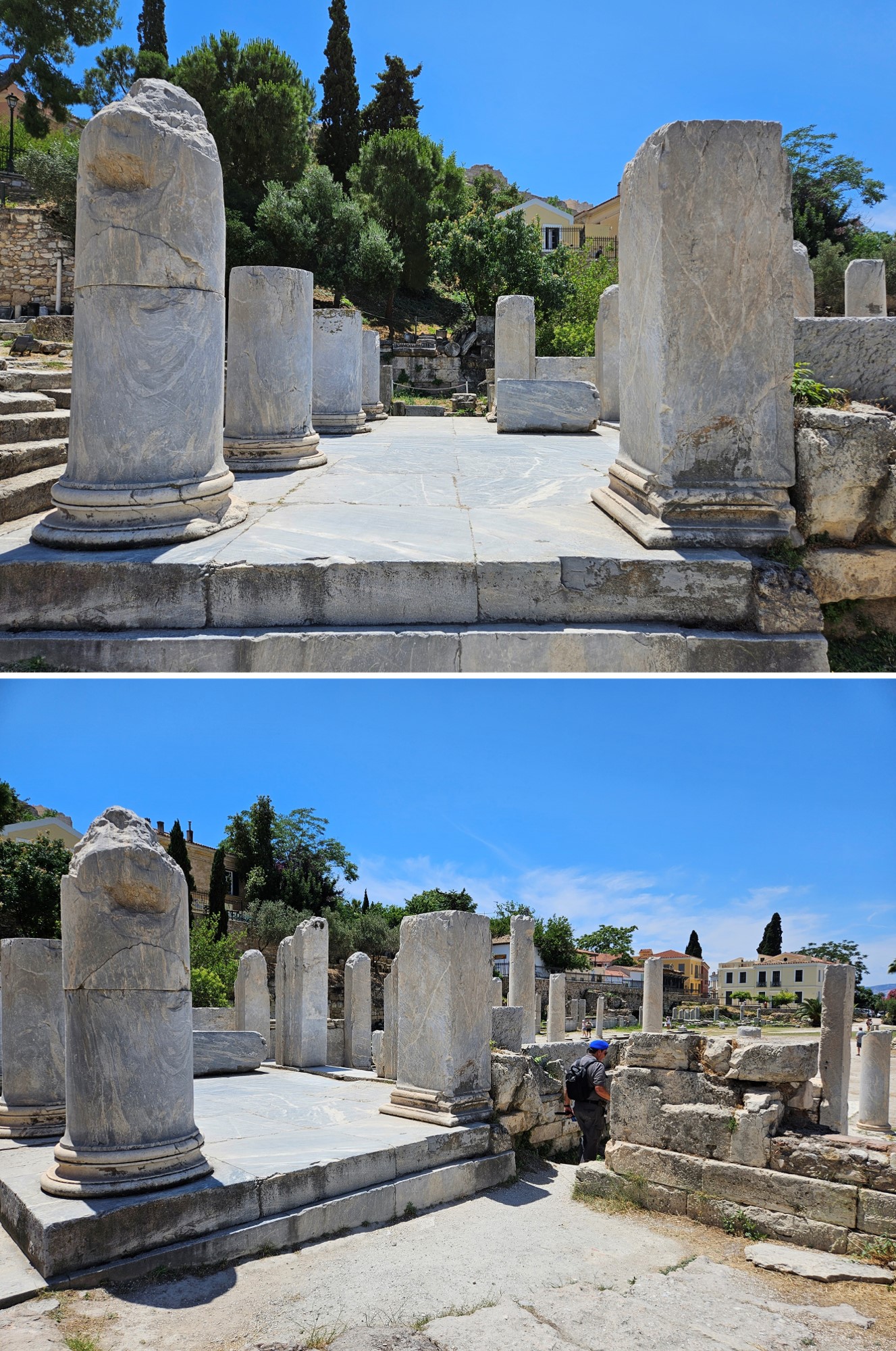
The eastern entrance to the Roman Agora, known as the eastern propylon, was built between 19 and 11 B.C. It had a row of four Ionic columns of gray Hymetus marble. It is one of the two original propyles (main entrances) that gave access to the marketplace.
Tower of the Winds
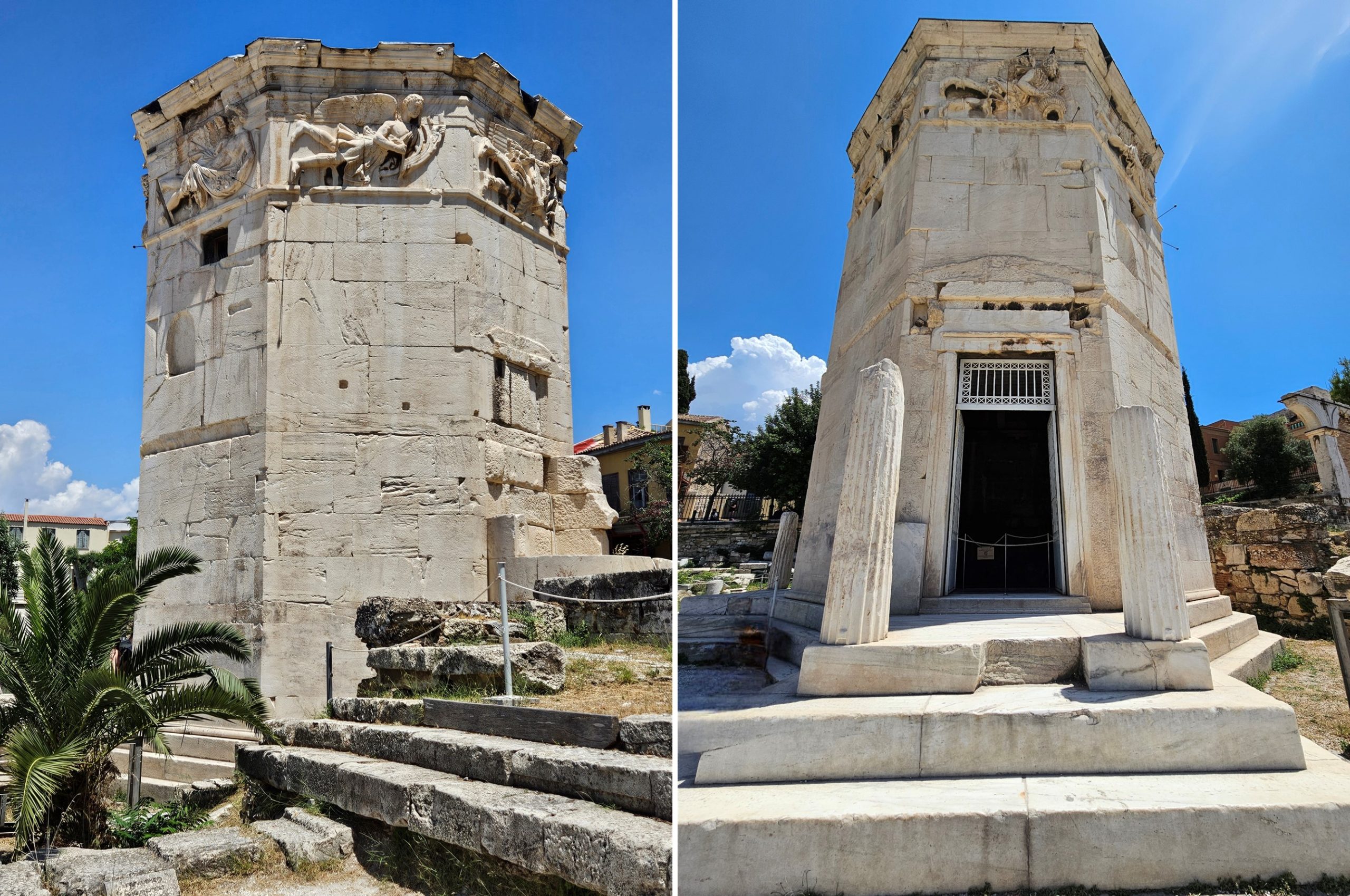
One of the outstanding monuments of the Roman Agora of Athens is the Tower of the Winds, also known as the Horologion of Andronikos Kyrrhestes. This magnificent sundial was erected by the Macedonian astronomer Andronicus of Kyrrhestes in the first half of the 1st century BC. Built with marble from Mount Pentelicus, this octagonal tower features a base with three steps, two Corinthian porches, a conical roof and a cylindrical annex on the south side.
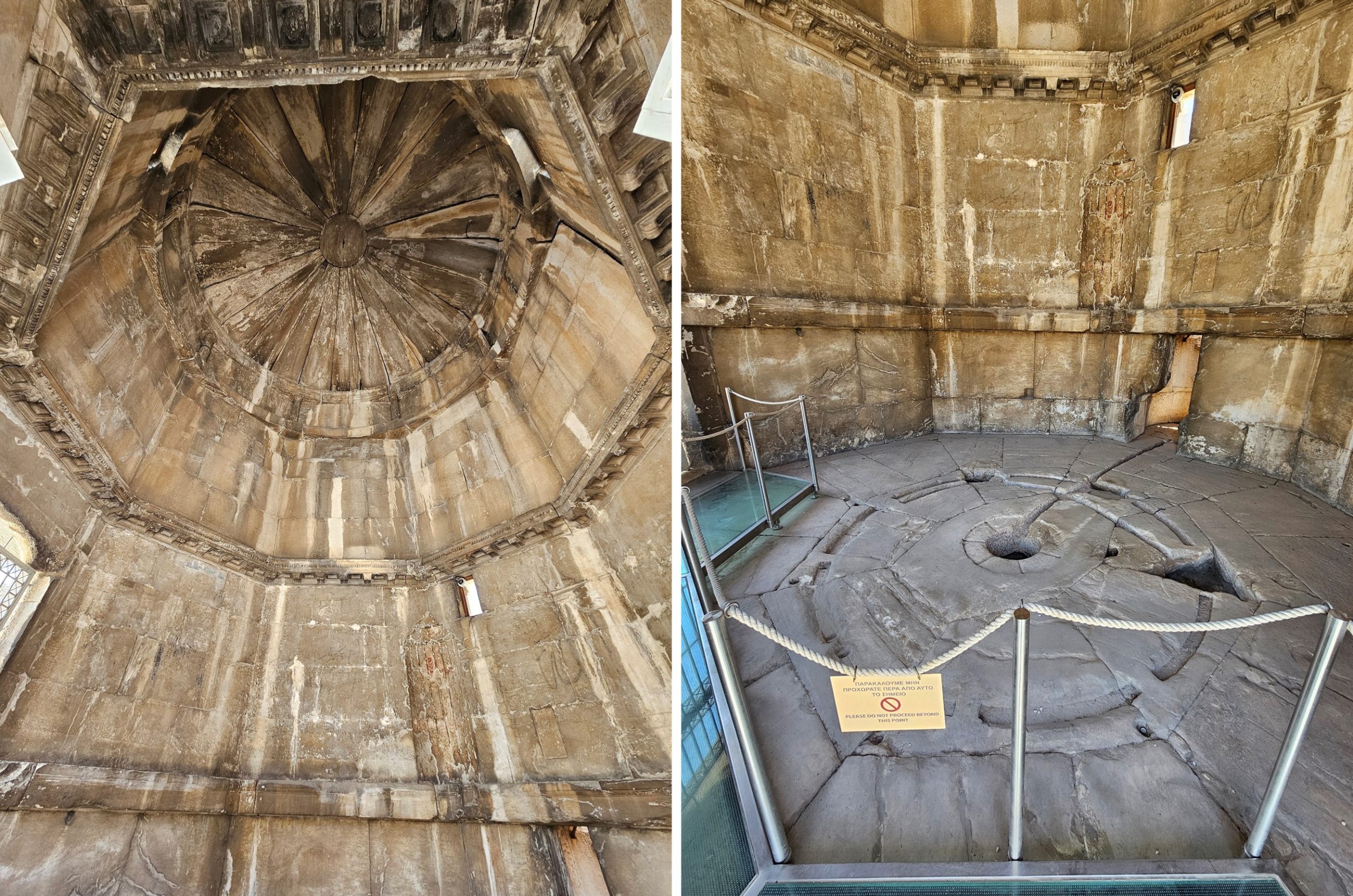
Inside, it housed a water clock, known as a clepsydra. Each side of the tower represents a cardinal point and has reliefs representing the winds associated with each direction: Bóreas (N), Noto (S), Euro (E), Zephyr (W), Kaikias (NE), Apeliotas (SE), Skiron (NW) and Lips (SW). A bronze weathervane in the shape of a Triton indicated the corresponding wind direction. In addition to their practical function, these reliefs were also used as markers for the sundial.
Agoranomion
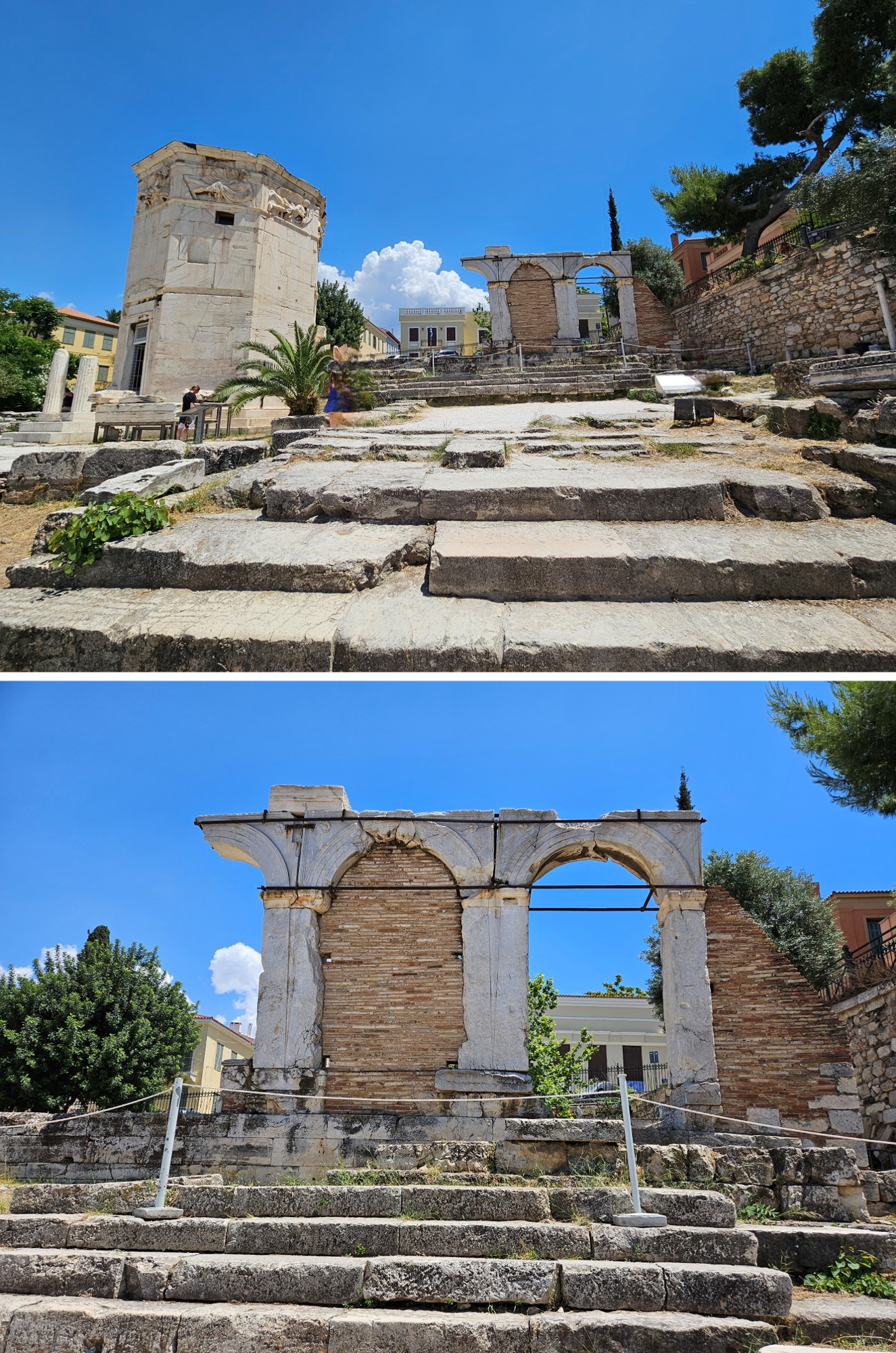
Agoranomion is the name given to an ancient rectangular-shaped building, dating from the 1st century, located east of the Roman Agora and southeast of the Tower of the Winds. Of the structure, the facade, which had three doors with arched lintels, is preserved in blue-gray marble from Mount Hymetus and a long staircase led to the entrance of the building. An inscription on the architrave mentions that the building was dedicated to Emperor Augustus and Athena Arquegetis. It was thought that this building with two rooms was the office of the market officials, however, current theories consider that it may have been part of the cult of Claudius or Nero. It could be identified with the Sevasteion, which refers to a building for the cult of the Roman emperor.
Library of Hadrian

Hadrian’s Library or Library of the Hundred Columns was a building located north of the Roman Agora of Athens and is located right next to the Mosque of Tzisdarakis. It was built in the year 132, by order of the Roman Emperor Hadrian, to house his extensive collection of books, in addition to functioning as a reading room and convention center. It was estimated that it could hold up to 10,000 volumes. It contained manuscripts by Plato, Aristotle, Euclid and many others. It was central to the cultural renaissance of Athens and served as a testament to the emperor’s respect for Greek culture.

Its architectural design reflected Roman grandeur. It had a marble facade, an inner courtyard surrounded by columns, and a decorative rectangular pool. In 267, it was severely damaged by the Herulian invasion and almost 200 years later, between 407 and 412, it was repaired by the prefect Herculius. It was incorporated into the Roman city walls and discovered in 1885, during an archaeological expedition. To the northwest of the Roman Agora lie the ruins of Hadrian’s vast Library.
Mosque of Tzisdarakis
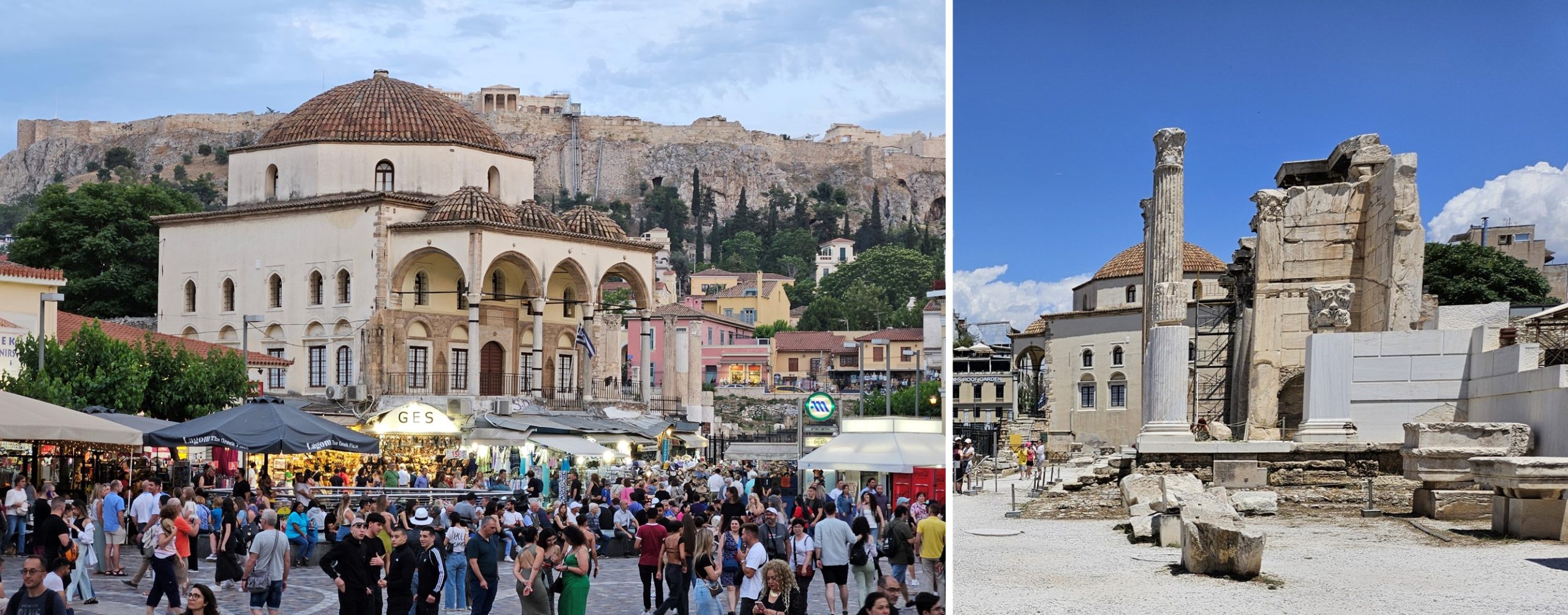
The Tzistarakis Mosque is a remarkable example of Ottoman architecture, erected in 1759 in Athens’ busy Monastiraki Square. It is located right next to Hadrian’s Library. During the Greek War of Independence, the building was transformed into a meeting hall for the city’s elders. After the achievement of independence, the mosque had various uses: it served as the setting for a ball in honor of King Otto I in March 1834 and also functioned as a barracks, prison and warehouse. Today, it is an annex of the Museum of Greek Folk Art.
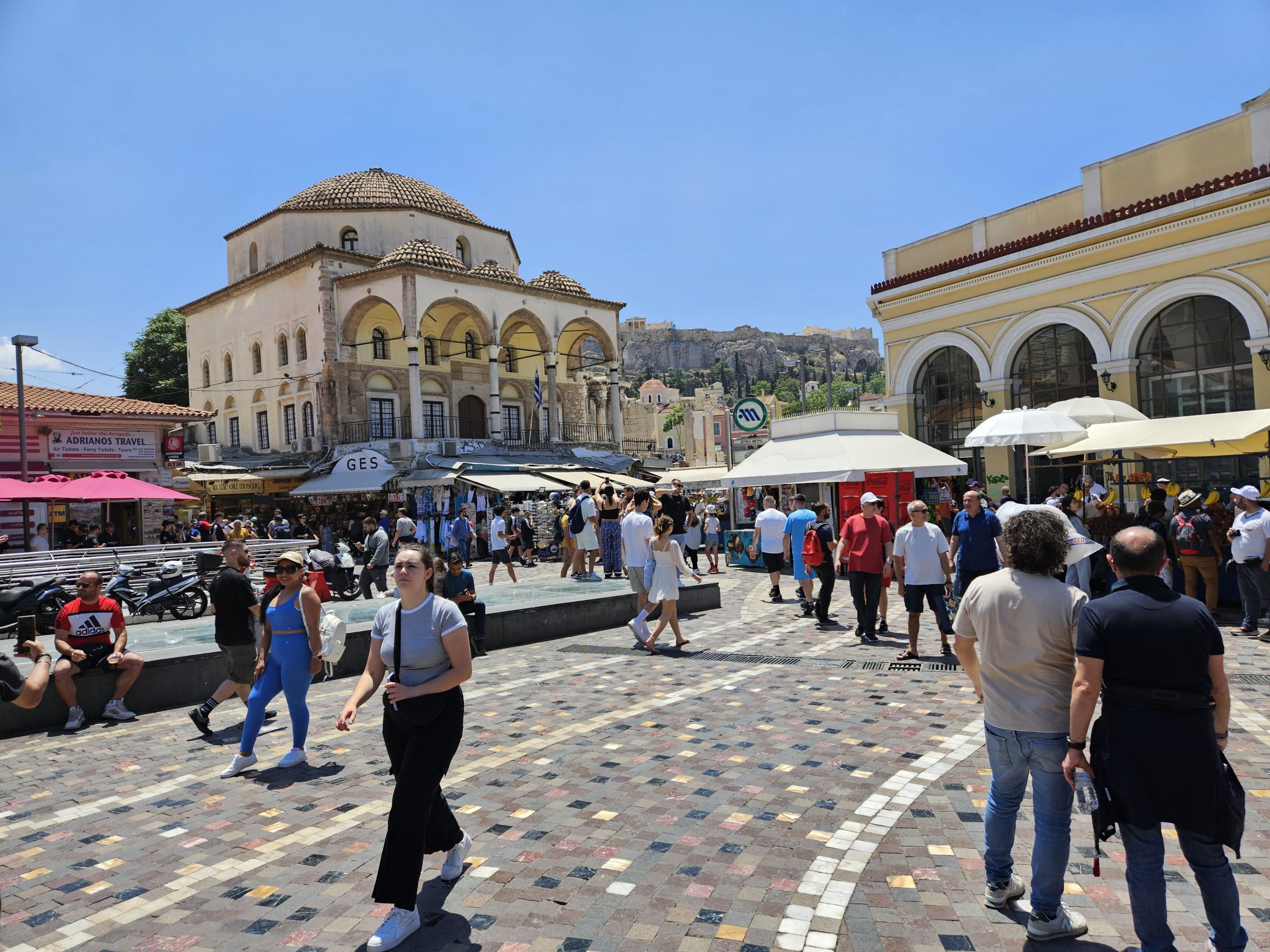
In 1973, the main activities of the Museum of Greek Folk Art were moved to another space and the mosque became an annex of the museum. In 1981, the structure was damaged by an earthquake, but reopened to the public in 1991.
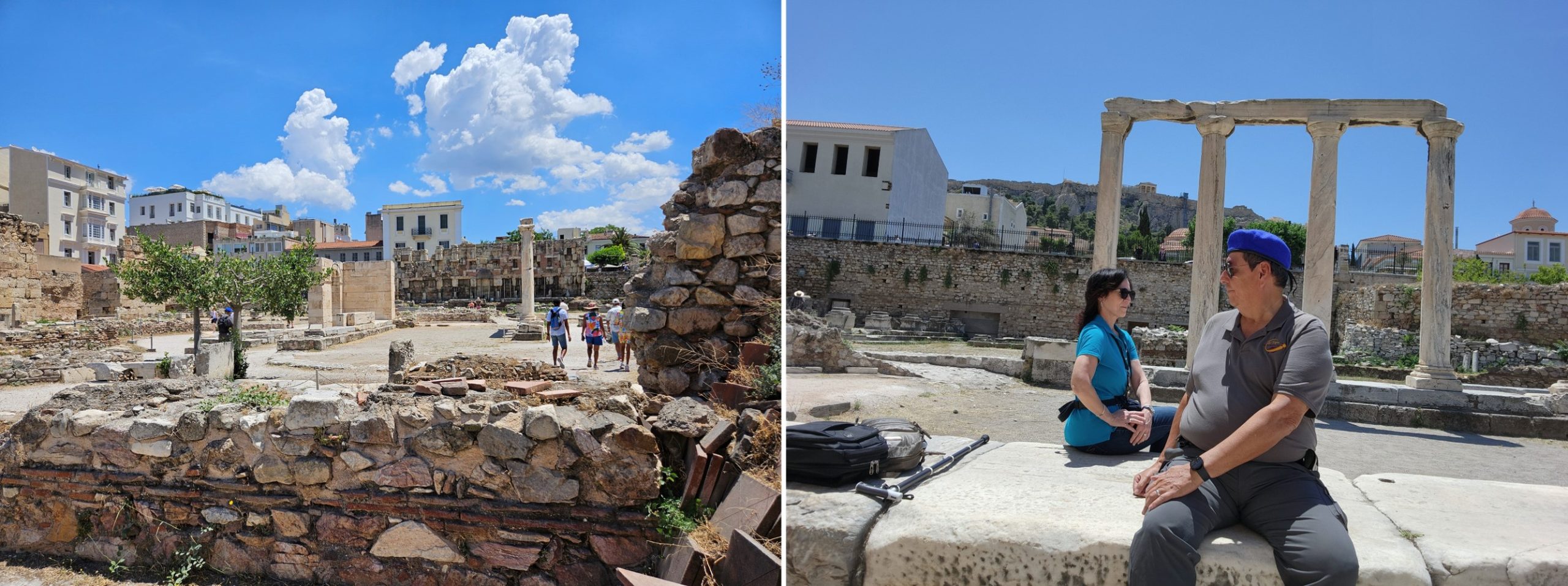
| Resources:
https://www.atenas.net/agora-romana https://es.wikipedia.org/wiki/%C3%81gora_romana_de_Atenas https://www.turismoengrecia.com/agora-romana-atenas |

